Rare Big Brother Steiff All Mohair Skunk Not In Pfeiffer READ MY REVISION
$299.00 Original price was: $299.00.$95.99Current price is: $95.99.
- Quality You Can Count On
- 100% High-Quality Guarantee
- 7 days free returns
- We take quality seriously.

If you, like a good part of the Steiff-collecting world, use the book Steiff Sortiment by Guenther Pfeiffer as an important, if not sole, source of information about all things Steiff, you may have seen his reference to the existence a 25 cm mohair skunk. When I first wrote this description, I thought that my guy was that rare one, and I thought that my inability to come up with a measurement that yielded an approximation of that size was just my ignorance, combined, perhaps, with the common situation that the real-life measurements of Steiff animals, each of which is handmade, and the number we collectors obtain often differs from what the catalogue says. I RESCIND WHAT I ORIGINALLY SAID.
In addition to my researching Steiff skunks on the Internet, I conferred with a Steiff expert in Germany (more on him below), and I am now convinced that Pfeiffer was in error. To be sure, there is, indeed, an FAO Schwarz exclusive all-mohair skunk who is bigger than the velveteen one we collectors typically think of, but his measurement, taken from his nose to his behind, is just under 7 inches, and if he had ever appeared in the Steiff catalogue, he would have been listed as 17 cm, not 25 cm.
The name of the Steiff expert I rely on for accurate information about all things Steiff is Daniel Hentschel. Ruby Lane will not let me list the whole URL here, but you can find a link to his spectacular website (look for the word “Teddybaer”) among my favorite links on the bottom right of my shop home page. I have to say that there have many been other instances where Pfeiffer has said something (or omitted something) and Daniel gave me the true information about that topic. And when I have a choice on how to represent something being offered in my shop, if there is a disparity between Pfeiffer and Daniel, I will ALWAYS choose Daniel!
Daniel told me that the next to last image I have pictured is a page taken from a 1959 FAO Schwarz catalogue; he has a copy of the cover with the date. He also told me that my last image was taken from the 1958 catalogue. Both of these catalogues list two skunks, the larger of which is given as 6 1/2 inches in size.
Just as an aside tidbit of information, the little skunk listed in both catalogues is also all mohair; I know that because I own him (as well as his velveteen brother). Pfeiffer makes no mention of the small all-mohair skunk at all.
Since these are FAO Schwarz catalogues, they don’t show the typical Steiff article numbers you see on yellow Steiff flags. But if my big guy ever did appear in a Steiff catalogue, he could have had either of two numbers: 1317,90 or 1317,0. I believe that both numbers belonged to FAO Schwarz exclusives, and the number that would have been on my skunk’s flag could have been either, depending on his precise date of production. Pfeiffer is right about one thing—the fact that the larger skunk was probably not made after the early 1960s.
I have two insignificant flaws to mention about Skunk. The first is the fact that there is a tiny bit of front-to-back “play” in his tail. His tail is standing essentially erect in all my pictures, and even if I were to move it a tiny amount, that would not change his measurement, which is taken horizontally along his back to his behind.
I have one other imperfection to tell you about. Under some lighting conditions, you can see a very shallow depression in the hair midway between Skunk’s eyes and about 3/4 of an inch up from his salmon-colored floss nose. I don’t know how to characterize this slight amount of thinning. If it is the beginning of what would have been a moth hole, the moth must have decided that he was not all that hungry, if it is some other kind of wear, its size and relative lack of depth don’t really give me enough to identify its source. As I say, this only becomes apparent when you look at Skunk under certain lighting circumstances. I am trying to show it to you (not very well, I admit) as in inset in of my fourth image, where Skunk is facing left.
Other than these two insignificant defects, I think that Skunk is in wonderful condition (and I mean absolutely, not “for his age”). The only other thing that MIGHT be problematic is his color. However, I believe the off-white you see here is very close to the way Skunk looked more than 60 years ago when he left the factory. His black could not have been any darker than what you see now.
I usually discuss an animal’s voice (or lack thereof) at the end of my descriptions. True, Skunk is silent, but he is very hard stuffed, and I can say, with confidence, that he never had a squeaker.
I can’t think of anything else to tell you except that of the thousands of Steiff animals I have helped find new homes, Skunk is definitely among the rarest. Of course, if you have any questions, by all means, write.
WHATEVER YOU DECIDE TO DO ABOUT SKUNK OR ANY OF MY OTHER STEIFF ITEMS, PLEASE BE SURE TO SEE THE ARTICLE I HAVE WRITTEN ABOUT STEIFF ID FRAUD—INCLUDING COUNTERFEIT CHEST TAGS—(AND OTHER IMPORTANT INFORMATION FOR COLLECTORS). YOU WILL FIND THE LINK ON THE BOTTOM RIGHT OF MY SHOP HOME PAGE UNDER “FAVORITE LINKS.” IF YOU HAVE NOT LOOKED AT IT RECENTLY, I UPDATED AND EXPANDED IT IN MARCH, 2023.
| ITEM ID | rl-2971 |
|---|---|
| COLOR | Black, White |
| ITEM TYPE | Vintage |
| FINE PLUSH AGE | Post 1950 |

















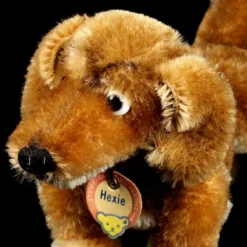
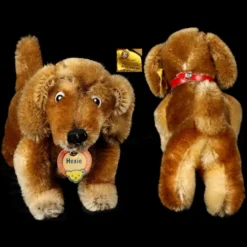



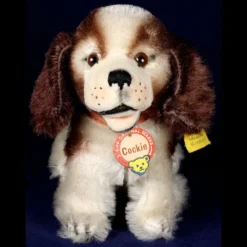

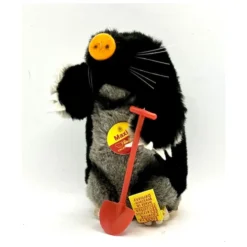

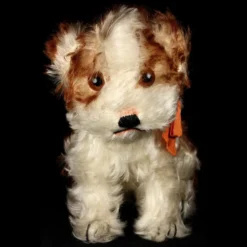



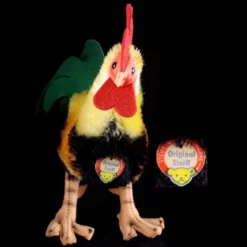
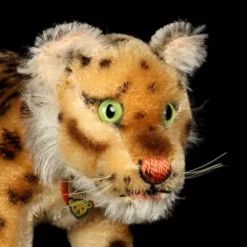

Reviews
There are no reviews yet.